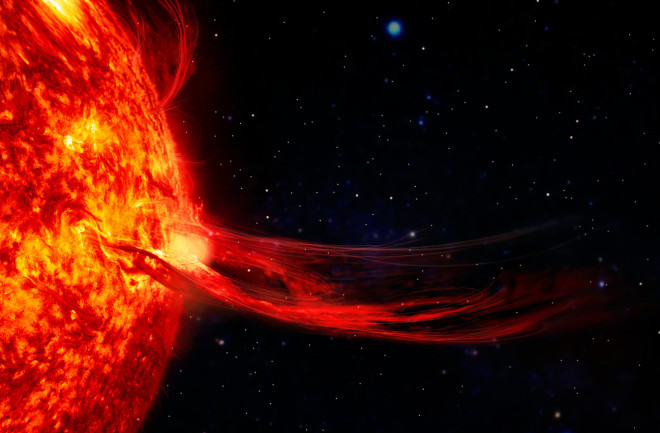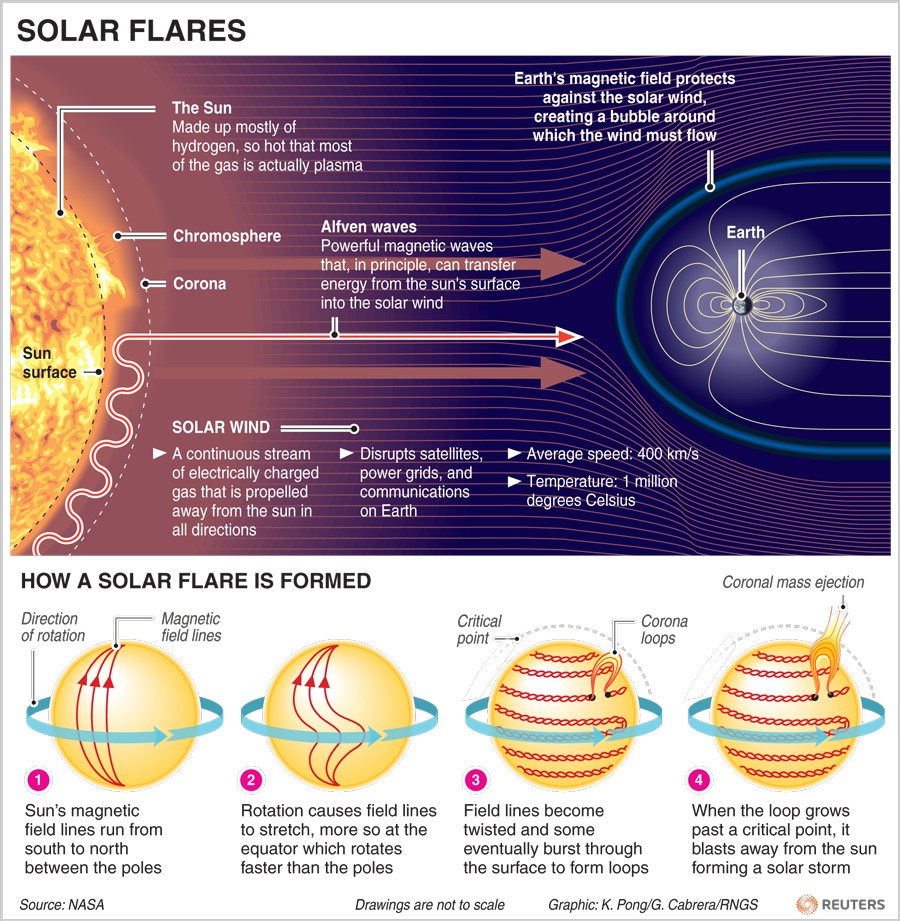Description

Disclaimer: Copyright infringement not intended.
Context
- The sun emitted a strong X2.2 class solar flare that can impact satellite communication and global positioning systems.
Solar flare
- A solar flare is an intense localized eruption of electromagnetic radiation in the Sun's atmosphere.
- Flares occur in active regions and are often, but not always, accompanied by coronal mass ejections, solar particle events, and other solar phenomena.
- Solar flares occur in a power-law spectrum of magnitudes; an energy release of typically 1020 joules of energy suffices to produce a clearly observable event, while a major event can emit up to 1025 joules.
- Solar flares affect all layers of the solar atmosphere (photosphere, chromosphere, and corona).
- The plasma medium is heated to tens of millions of kelvins, while electrons, protons, and heavier ions are accelerated to near the speed of light.
- Flares produce electromagnetic radiation across the electromagnetic spectrum at all wavelengths, from radio waves to gamma rays.
- Most of the energy is spread over frequencies outside the visual range; the majority of the flares is not visible to the naked eye and must be observed with special instruments.
- Flares occur in active regions often around sunspots, where intense magnetic fields penetrate the photosphere to link the corona to the solar interior.
- Flares are powered by the sudden release of magnetic energy stored in the corona. The same energy releases may produce coronal mass ejections (CMEs), although the relationship between CMEs and flares is still not well understood.
- The frequency of occurrence of solar flares varies with the 11-year solar cycle. It can range from several per day during solar maximum to less than one every week during solar minimum. Additionally, more powerful flares are less frequent than weaker ones.

Impact of Solar Flares and CMEs on Earth
Not all solar flares reach Earth, but solar flares/storms, solar energetic particles (SEPs), high-speed solar winds, and coronal mass ejections (CMEs) that come close can impact space weather in near-Earth space and the upper atmosphere.
- Space-dependent services: Solar storms can hit operations of space-dependent services like global positioning systems (GPS), radio, and satellite communications.
- Radio communication: Geomagnetic storms interfere with high-frequency radio communications and GPS navigation systems.
- Magnetosphere: CMEs, with ejectiles loaded with matter travelling at millions of miles an hour, can potentially create disturbances in the magnetosphere, the protective shield surrounding the Earth.
- Astronauts: Astronauts on spacewalks face health risks from possible exposure to solar radiation outside the Earth’s protective atmosphere.
- Other: Aircraft flights, power grids, and space exploration programmes are vulnerable.
Must Read:
https://www.iasgyan.in/blogs/solar-cycle
https://www.iasgyan.in/daily-current-affairs/solar-corona
https://www.iasgyan.in/daily-current-affairs/geomagnetic-storm
https://www.iasgyan.in/daily-current-affairs/muse-and-helioswarm















